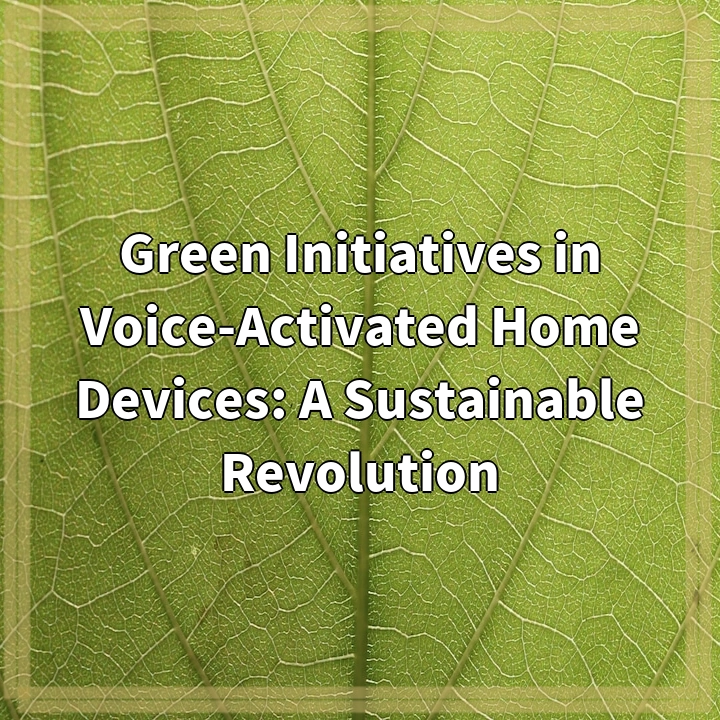
What is Green Initiatives in Voice-Activated Home Devices?
Voice-activated home devices, such as smart speakers and virtual assistants, offer conveniences and efficiency in managing various tasks within our homes. They are designed to respond to voice commands, providing hands-free access to information, entertainment, and controlling other smart devices. However, what sets green initiatives in voice-activated home devices apart is their focus on incorporating sustainability features and practices to minimize environmental impact.
Real-World Problems Associated with Green Initiatives in Voice-Activated Home Devices
While green initiatives in voice-activated home devices bring forth a sustainable revolution, there are a few real-world problems that need addressing. These challenges are crucial to consider when discussing ways to improve the environmental performance of these devices.

Solutions for Green Initiatives in Voice-Activated Home Devices
To address the real-world problems associated with green initiatives in voice-activated home devices, several solutions can be implemented. These solutions aim to enhance the environmental performance of these devices and promote a more sustainable approach.
1. Energy Efficiency:
One of the key solutions is to focus on improving the energy efficiency of voice-activated home devices. Manufacturers can work towards optimizing power consumption by utilizing advanced hardware and software technologies. This can be achieved through intelligent power management systems, low-power components, and software algorithms that minimize energy usage during standby modes.
2. Sustainable Materials:
Another solution is to prioritize the use of sustainable materials in the manufacturing of voice-activated home devices. By prioritizing materials with lower environmental impacts, such as recycled plastics or bio-based materials, the overall carbon footprint of these devices can be reduced. Additionally, manufacturers can explore initiatives to promote recycling and responsible disposal of these devices at the end of their lifespan.
3. Repairability and Upgradability:
Designing voice-activated home devices with repairability and upgradability in mind can contribute to their longevity and reduce electronic waste. By allowing users to easily replace faulty components or upgrade certain features, the lifespan of these devices can be extended, reducing the need for frequent replacements and thus decreasing environmental impact.
4. Privacy Considerations:
Privacy is an important aspect to consider in the development of voice-activated home devices. Implementing robust privacy features and ensuring user data protection can build trust among consumers. This, in turn, can lead to increased adoption of these sustainable devices, contributing to a more comprehensive and eco-friendly future.















